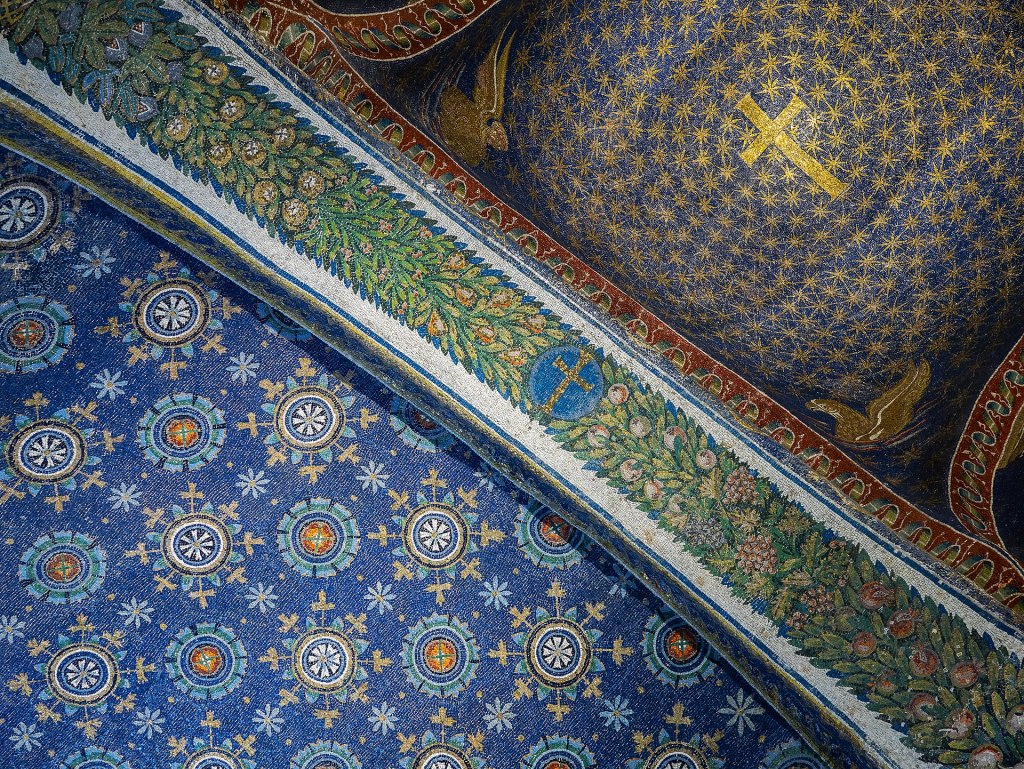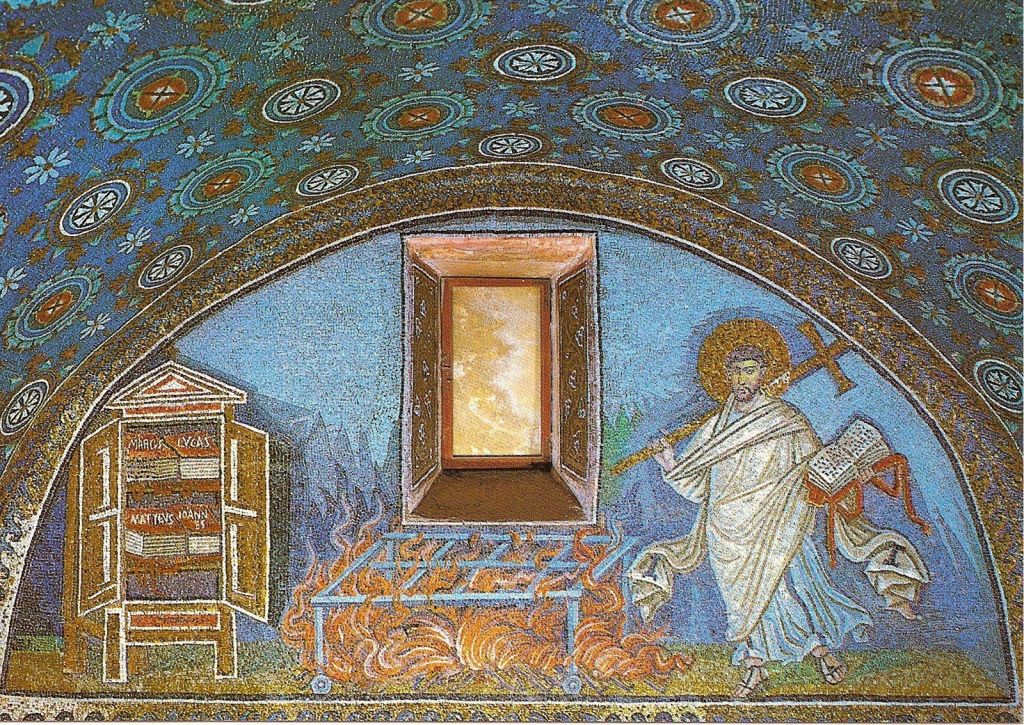February Art: mosaic
What might be the best building in Europe sits modestly in the grounds of a larger church, more like red brick hut than chapel, with only neat gables, unadorned arches, and a low square tower to show anyone cared. Inside, though, all is ravishing. The Mausoleum of Galla Placidia in Ravenna was indeed sponsored in 425 AD by the Augusta, the powerful woman who ruled the Roman empire as regent, but she’s not there: none of the three sarcophaguses in the vault are hers.
It doesn’t matter, as a visitor’s attention is drawn inexorably upwards towards the marvel of an interior sky with stars, evangelists and animated saints surrounded by huddled lambs or crouching deer, doves drinking from the fountain, patterns of acanthus scroll and vines, flowers, spirals, the cross, each apse or lunette opening up new wonders.

All this made by tiles, glass blue or gold tesserae, with undimmed greens and yellows creating one of the unified masterpieces of Byzantine mosaic art – surrounded by marshes but open to the eastern seas, Ravenna was rich. The windows being screened by semi-transparent alabaster slabs, a changing half-light burns through orange and gold, fittingly in one alcove above the flames of St Vincent who is being made to burn his books.
The light, the holy fire of God, comes in less to purify than bless, bringing not austerity and asceticism, but subtlety, care, abundance, paradise, emphatically in favour of the image and the Word.



